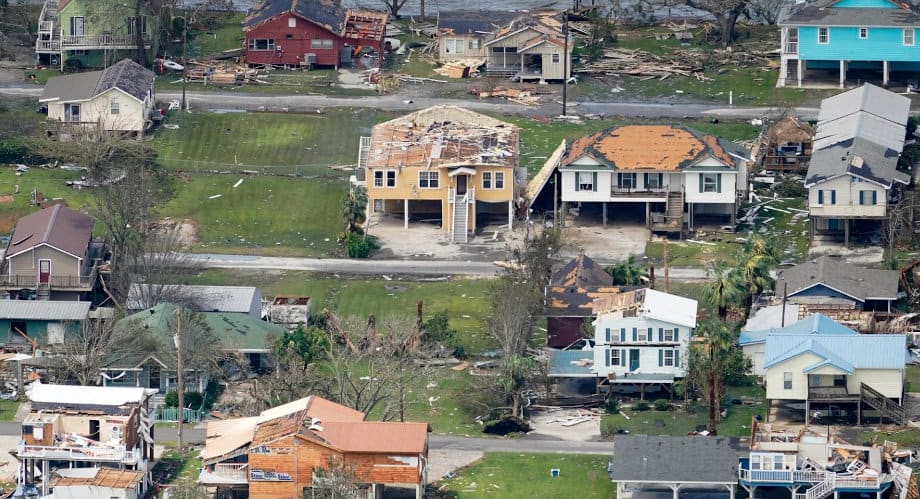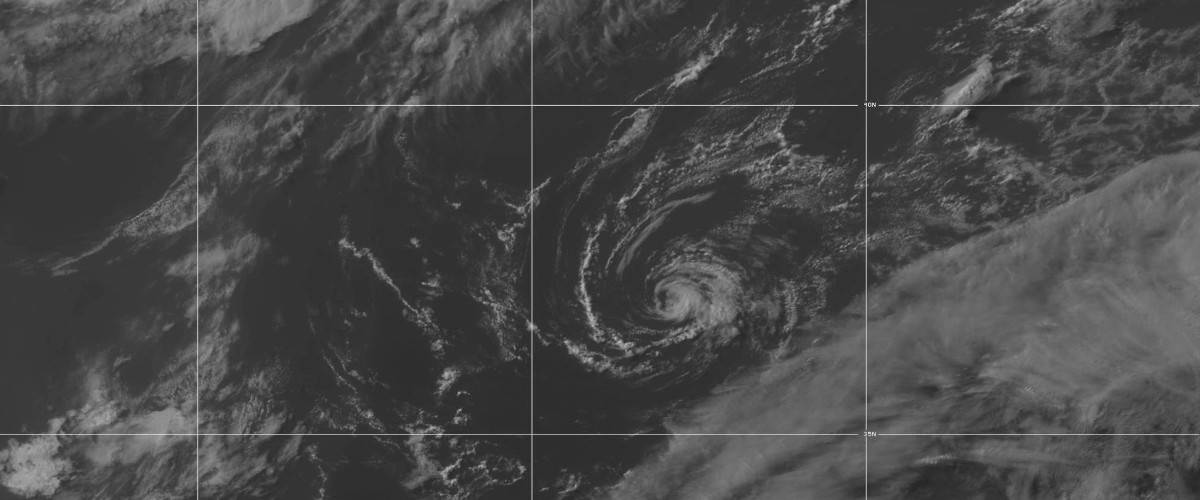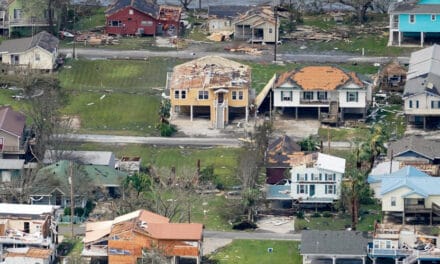Tropical Storm Ana on Sunday, May 23. Though relatively small and short-lived, the formation of TS Ana marks the 7th consecutive year that a storm formed before June 1. NOAA Satellite Imagery.
2021 Season Becomes 7th Consecutive Year with a Tropical Cyclone Before the Season Start
With the formation of Tropical Storm Ana, 2021 Marks 7th Consecutive Year for a Tropical Cyclone to form before the official June 1 start of the 2021 Atlantic Hurricane Season.
Sub-Tropical Storm Ana formed early on Saturday, May 22. Forecast to enter a hostile environment on Sunday and with the system split between tropical and non-tropical characteristics, the NHC expected little if any strengthening. Ana had 40 MPH winds and higher gusts. However, Ana became fully tropical by Sunday and became Tropical Storm Ana. Later in the day, it entered a hostile environment over colder water and degraded into a tropical depression and then a post-tropical cyclone.
The National Hurricane Center issued its last forecast advisory on Sunday at 10 PM EST.
After five consecutive above average hurricane seasons, coastal states are ready for a break, but it probably won’t happen in 2021. This year, the NOAA moved the decades used for seasonal averages ahead ten years which increased the seasonal averages based on the last three decades. Instead of an average 12 named storms per year, the average is now 14.
Coastal States Brace for Another Above Average Hurricane Season
The April Forecast for the 2021 Hurricane Season included 17 named storms, 8 Hurricanes, and 4 Major Hurricanes. The NHC names tropical cyclones when they reach tropical storm strength with sustained winds of 39 MPH or higher. A Tropical Depression is a cyclone with less than 39 MPH sustained winds. They classify storms as hurricanes when their winds reach 74 MPH or higher.
The forecast for 2021 has similarities to the record-breaking 2020 hurricane season.
It started in December with the annual discussion that follows the season end on November 30. Both seasons had a higher than 50 percent change for above average tropical cyclone activity. In April, the forecast increased to include more named storms and hurricane. May 2020 saw two tropical storms, one of which made landfall in South Carolina. On June 1, Tropical Storm Cristobal set records for the earliest “C-Named” storm on record. It set another record by surviving as a tropical system through the central U.S., across the Great Lakes, and into Canada where it finally dissipated near Hudson Bay.
The June 2020 forecast added more named storms and hurricanes to the season outlook. That forecast vastly underestimated what would become the most active hurricane season on record.
One difference between last year and this year may help to moderate the season. The current state of the El Nino Southern Oscillation (ENSO) is currently trending toward neutral. Last year at this time it was trending toward a La Nina. An El Nino helps reduce the number of Atlantic Storms, while La Nina helps increase that number. However, The Atlantic Multi-decadal Oscillation (AMO) remains positive which helps increase the number of storms.
The best advice anyone can give. Prepare for the 2021 Atlantic Hurricane Season. It only takes one storm to make it an active season for your home, family, and community.



















